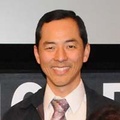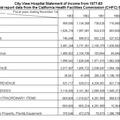Read Part 4 >>
TRUSTEESHIP OF THE JAPANESE HOSPITAL AND INTERNMENT
With the outbreak of war between the United States and Japan, the Japanese-American community was subjected to increasing pressure to evacuate the West Coast. The trustees sought a way to maintain the hospital should the evacuation take place.1
Fortunately, the Japanese Hospital enjoyed a friendly relationship with a neighboring hospital, White Memorial Hospital, which was affiliated with the Seventh Day Adventist Church. The director of White Memorial, Hatsuji Hara, M.D., was himself a Japanese physician who had received his medical training at Loma Linda University Medical School. In addition, several of the staff of the respective hospitals were close associates. As a result of these good relationships, the two hospitals drew up a trusteeship arrangement. The Japanese Hospital of Los Angeles would be maintained by White Memorial Hospital for the duration of the internment.
In March of 1942, General John L. DeWitt ordered the evacuation of all persons of Japanese descent into internment camps or evacuation centers. The Wartime Relocation Authority chose to assign the Japanese physicians to specific camps, in order to distribute medical staff members to each camp.2 Makeshift hospitals were set up in designated barracks. Outbreaks of food poisoning and infections occurred in the midst of hastily set up, crowded camps. Personal recollections of the health care accorded the interned Japanese Americans are given in And Justice for All by John Tateishi and Silent Scars of Healing Hands by Naomi Hirahara and Gwenn M. Jensen.3
POSTWAR REESTABLISHMENT OF THE JAPANESE HOSPITAL
On August 15, 1945, the Emperor of Japan officially announced the surrender of Japan to the Allied forces. Following this, the interned Japanese-Americans who had already been allowed to return, when the end of the war was imminent, now returned in earnest.
White Memorial Hospital returned the Japanese Hospital to its original owners by May of 1946.4 The board of trustees formed itself anew, with only Drs. Tashiro and Kuroiwa remaining of the original five founding members.
One of the immediate problems facing the reestablished hospital was a shortage of nurses. Many of the original nurses had decided not to return or else had not yet returned to Los Angeles. Dr. Tashiro, among others, actively recruited the returning nurses.5
Gradually, as the Japanese-American community settled back into Los Angeles, the patient census at the hospital returned to its normal busy state. In fact, the community had grown in size. The U.S. census of 1950 showed 37,809 Japanese-Americans residing in the Greater Los Angeles Area (including Orange County), higher than any pre-war figure.6
Seven years after the reestablishment of the Japanese Hospital, Dr. Kikuo Tashiro suffered a heart attack after having carried out a difficult surgical case. He had spent many years as the chief surgeon of the hospital, had been one of the surviving founders, as well as the main plaintiff in the court case. When he died in February, 1953, at the very hospital he had nurtured through many years of hardship, the news of his death evoked an outpouring of remembrances and tributes from the Japanese-American community. The remaining hospital trustees decided to rename it the Japanese Memorial Hospital in commemoration of Dr. Tashiro.
After this, the Japanese Memorial Hospital continued to function for a few more years at its original site in Boyle Heights. However the old structure became increasingly inadequate and the trustees discussed plans to move the hospital to a new site. By 1960, a larger structure became available, formerly occupied by a Methodist hospital. The site of the new structure was near the large County-USC Medical Center, in the midst of Hispanic neighborhoods. In a fateful decision, the trustees of the Japanese Memorial Hospital decided to purchase this hospital, called City View Hospital.
The Japanese Memorial Hospital corporation changed its structure at this time, hiring its first hospital administrator, Edwin Hiroto. It reincorporated as a non-profit corporation, called “Memorial Hospital of the Japanese Community,” in June 1961. The corporation retained the name “City View Hospital” for the new facility.
DEMOGRAPHIC TRENDS AND THE ERODING BASE OF SUPPORT OF CITY VIEW HOSPITAL
City View Hospital had fifty-three beds, including general acute medical, surgical, pediatric and obstetrical beds. Although not situated in a Japanese-American neighborhood, City View at first prospered. Some of the physicians of the previous Methodist hospital joined up with the Japanese physicians, forming a strong base of referrals.
In the pre-war period, the Japanese-Americans were restricted by overt discrimination to working only in certain jobs and living in well-defined enclaves throughout Los Angeles. Boyle Heights was a typical pre-war Japanese neighborhood, a community which they shared with other recently arrived immigrants.
But in the post-war period, helped by favorable press gained by their wartime exploits, the Nikkei (Japanese-Americans) enjoyed access to new jobs and neighborhoods. They left their old homes for the new suburban tract homes.
The census data from 1960, 1970, and 1980 suggests that the numbers of Japanese residing in East Los Angeles, the area surrounding the hospital, declined. Other suburban areas of Los Angeles, such as Cerritos, Gardena, Huntington Beach, Long Beach, Montebello, Monterey Park and Torrance gained sizeable numbers of Japanese-Americans by 1980.8
As part of the new freedom in job opportunities open to the Nikkei after the war, the Japanese-American medical graduates found many more opportunities to gain internships in the mainstream hospitals in Los Angeles. Upon completing their residencies, the new Nikkei doctors set up practice wherever they wished. A few joined City View, but even they were no longer exclusively dependent on it as their site of practice. Several others followed the Japanese-American migration to the suburbs, swelling the admitting staffs of such hospitals as the Community Hospital of Gardena, or the Little Company of Mary Hospital in Torrance.
Discrimination had led the Japanese community to construct its own hospitals to ensure it access to care. But now the doors of the mainstream hospitals opened to the Nikkei. City View was still unique in its role of caring for Japanese patients via their own language, food and customs, but the English-speaking Nisei and Sansei could go anywhere. And so could the Nikkei doctors go elsewhere for their training.
Eventually, these younger doctors duplicated City View’s ability to deliver health care in Japanese. Torrance and Gardena, with combined populations of nearly 18,000 Japanese-Americans in the 1980 census, had their own local facility with Japanese-speaking staff—the Community Hospital of Gardena. During City View’s crisis in 1985, this hospital advertised its ability to deliver speed therapy and dietary, nursing and physician care to Japanese-speaking patients.
City View hospital, whose patients were gradually becoming older, also had an aging medical staff. Several longtime Japanese physicians, along with a few new physicians, constituted the medical staff. In time, many of the Japanese-trained physicians passed away. The other physicians aged along with their patients. When the physicians died they did often hand down their practice to a younger protégé. Thus, with each death or retirement of a staff physician, City View’s base of referrals shrank accordingly.9
Along with the dispersal of the Nikkei community, the wider access to health care for the English-speaking Nikkei, and the signs of aging at City View, the hospital seemed to be losing recognition among the younger Japanese-Americans. Since other hospitals could care for these English-speaking patients, fewer young patients were admitted as the years passed. And in 1975, newborn deliveries were discontinued as well. The very name “City View” reduced the likelihood that a Japanese-American would recognize the Japanese character of the hospital. Nor did the hospital publicize itself at community events such as the annual Nisei week parade in Little Tokyo. As a result, most younger Japanese-Americans did not know of the existence of such a hospital as City View.
Notes:
- Hasegawa, op. cit., Book IV, p. 2-217.
- United States War Department, Final Report: Japanese Evacuation from the West Coast (Washington, D.C., 1943).
- John Tateishi, compiler, And Justice for All: An Oral History of the Japanese-American Detention Camps (New York: Random House, 1984), ff. 208, 222, 227; Naomi Hirahara and Gwenn M. Jensen, Silent Scars of Healing Hands (Fullerton, CA: Center for Oral and Public History at California State University, Fullerton, 2004).
- Hasegawa, op. cit., p. 3-31.
- Ibid., p. 3-32.
- Ibid., p. 3-34.
- Articles of Incorporation, Memorial Hospital of the Japanese Community, July 19, 1961, Corporate Division, Secretary of State, Sacramento.
- 1960 Census, Table 79, pp. 6-377 to 6-385; Table 80, pp. 6-386 to 6-392. 1970 Census, Table 81, pp. 6-429 to 6-432. 1980 Census, Table 58, pp. 6-33 to 6-52.
- Personal conversation with Edwin Hiroto, Administrator of City View Hospital, September 4, 1985.
© 1986 Troy Tashiro Kaji




